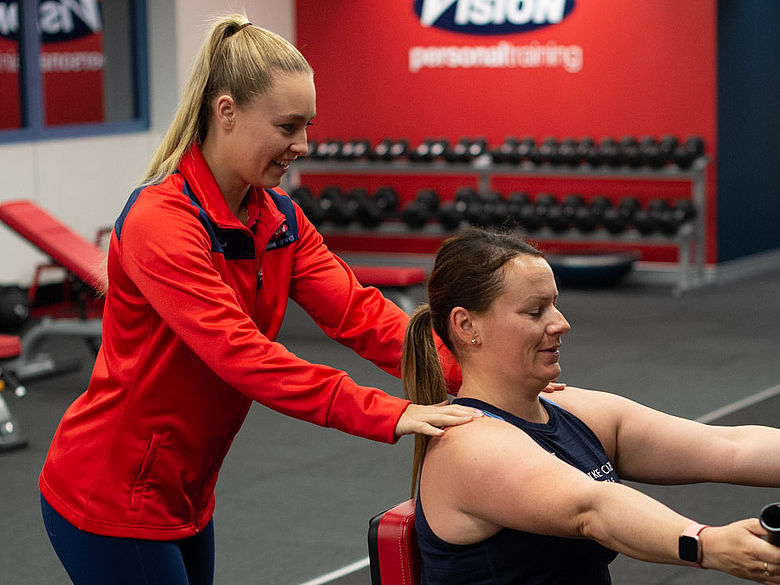- ATP-CP (Adenosine Triphosphate - Creatine Phosphate) System:
Often referred to as the 'quick' system as it only lasts for very short bursts, often 0-10 seconds. For Clients looking to lift as heavy as possible, this will be the predominant energy system used as it yields high amounts of energy in very short amounts of time. Other examples of sports where the ATP-CP system is the predominant source of energy are: sprinting (100m), athletic field events (javelin, discus, shotput), even in sports such as baseball and golf during the action of swinging. Clients looking to train their ATP-CP system should focus on short, heavy and explosive movements, the eccentric (down/negative phase) should be 3 seconds while the concentric (up phase) should be 1 second of very powerful movement.
- LACTATE SYSTEM
The lactate system produces a lot of power, but not quite as much or as quickly as the ATP-CP system. However, it has a larger fuel supply and doesn't burn it all as quickly as the ATP-CP system, therefore lasting longer (10 seconds - 120 seconds). Examples of sports that fall into the lactate category are swimming (more so the 50m freestyle), and sports such as Soccer, AFL, Basketball where the running patterns are very "short-burst" oriented (30 seconds on, 30 seconds off). People training for events such as these should focus on getting used to the feeling of lactic acid in their legs. Interval training and fartlek are perfect examples. The Cross-Training class that we have at Vision is also a great example of the Lactate system being used.
- AEROBIC SYSTEM
The best way to think of the aerobic system is as a diesel bus with a massive fuel tank rather than the ATP-CP and lactate systems which are comparable to V8 cars - short and sharp bursts of power. While the aerobic system doesn't produce nearly as much power as the others, a major feature is its work capacity which is virtually limitless. When trained and adapted, it can just keep on producing energy - the system is so sustainable that it could virtually never run out. The best examples for the aerobic system are pretty straight forward; any continuous endurance event that runs for longer than 10 minutes, the aerobic system is the predominant one used. Ways to train the aerobic system include: Interval training for the long term aerobic energy system which have a work-rest ratio of 1:1 or 1:2), and 'Fartlek' training - A type of interval training whereby the exerciser varies the speed and effort throughout the training session according to how they feel ensuring that they can continue to exercise at all times (i.e. no rest intervals).
In terms of nutrition when training for all 3 energy systems, carbohydrates should be consumed before and after training. When we are extremely active with our sport, our bodies are almost always in recovery mode, therefore a good mix of Carbohydrates, Proteins and Fat is crucial for recovery and performance.
*Disclaimer: Individual results vary based on agreed goals. Click here for details.

